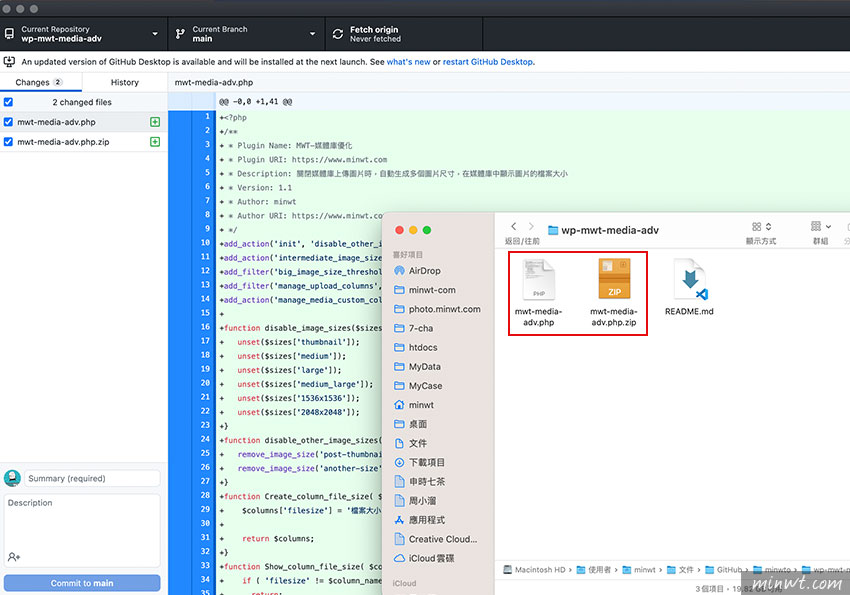

For substantial work such as articles, books, or dissertations, version control makes a lot of sense. However there are times when version control will be very useful. Version control will not be necessary for all of the documents you write. With this approach you would also retain a ‘history’ of the previous version should you wish to revert back to one of these later on.
#GITHUB FOR DESKTOP HOW TO#
If there were ‘conflicts’ between the two versions version control systems would allow you to see these conflicts and make an active decision about how to ‘merge’ these different versions into a new ‘third’ document. As an example it would be possible for two people to work on a document at the same time and then merge these documents. Using version control to collaborate allows for a greater deal of flexibility and control then many other solutions. One of the original motivations behind version control systems was to allow different people to work on large projects together, in the case of Git to manage the Linux kernel source code. Version control is particularly useful for facilitating collaboration. Revert changes, moving ‘backwards’ through your history to previous versions of your document.‘Merge’ two versions of a document and manage conflicts between versions.Experiment with different versions of a document while maintaining the original version.Record the changes you made to your document in a way that you will be able to understand later.Track developments and changes in your documents.Though not all of these benefits will be covered in this lesson, version controlling your document allows you to:
#GITHUB FOR DESKTOP CODE#
Though version control was originally designed for dealing with code there are many benefits to using it to with text documents too.

This becomes especially important when we want to collaborate with other people. Why Version Control Text Documents?Īs research increasingly makes use of digital tools and storage it becomes important to consider how to best manage our research data. From this basic aim of version control a range of other possibilities are made available. This allows you to ‘rewind’ your file to an older version. This snapshot records information about when the snapshot was made but also about what changes occurred between different snapshots. At its simplest, version control involves taking ‘snapshots’ of your file at different stages. Version control tries to address problems like these by implementing a systematic approach to recording and managing changes in files. If you have a change of heart about some of these changes you also need to work out which date the changes were made in order to go back to a previous version. It is possible that some of these changes were small typo fixes but the changes could also have been a major re-write or re-structuring of a document. Primarily this system doesn’t record or describe the changes that took place between these two saves. Though this system might be slightly easier to follow, there are still problems with it. Often this is done by saving different versions of the files. Many people will have introduced some sort of version control systems for files. At a basic level version control involves taking ‘snapshots’ of files at different stages. It is helpful to understand what version control is and why it might be useful for the work you are doing prior to getting stuck into the practicalities. If you use Linux you will probably already be familiar with the command line and will be able to use the Command Line version of Git. GitHub Desktop Classic is currently only available for Mac. be aware of other resources that will help you implement version control in your academic writing.how to implement version control using ‘GitHub Desktop,’ a Graphical User Interface for GitHub.what version control is and why it can be useful.By the end of this lesson you should understand: In this lesson you will be introduced to the basics of version control, understand why it is useful and implement basic version control for a plain text document using GitHub Desktop. This lesson only refers to the OS X version now known as “GitHub Desktop Classic” that may be downloaded here. Since then, GitHub has released an entirely new version of GitHub Desktop with a significantly different interface. This lesson was written for an older version of GitHub Desktop for OS X.


 0 kommentar(er)
0 kommentar(er)
